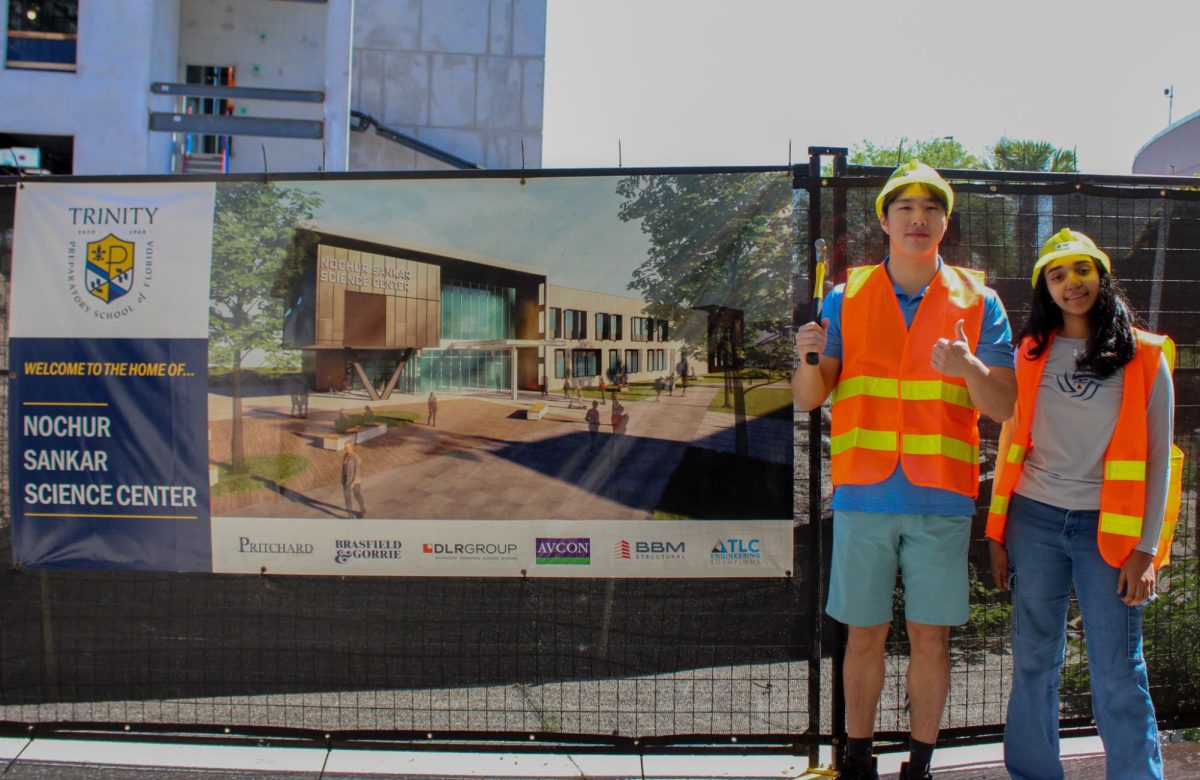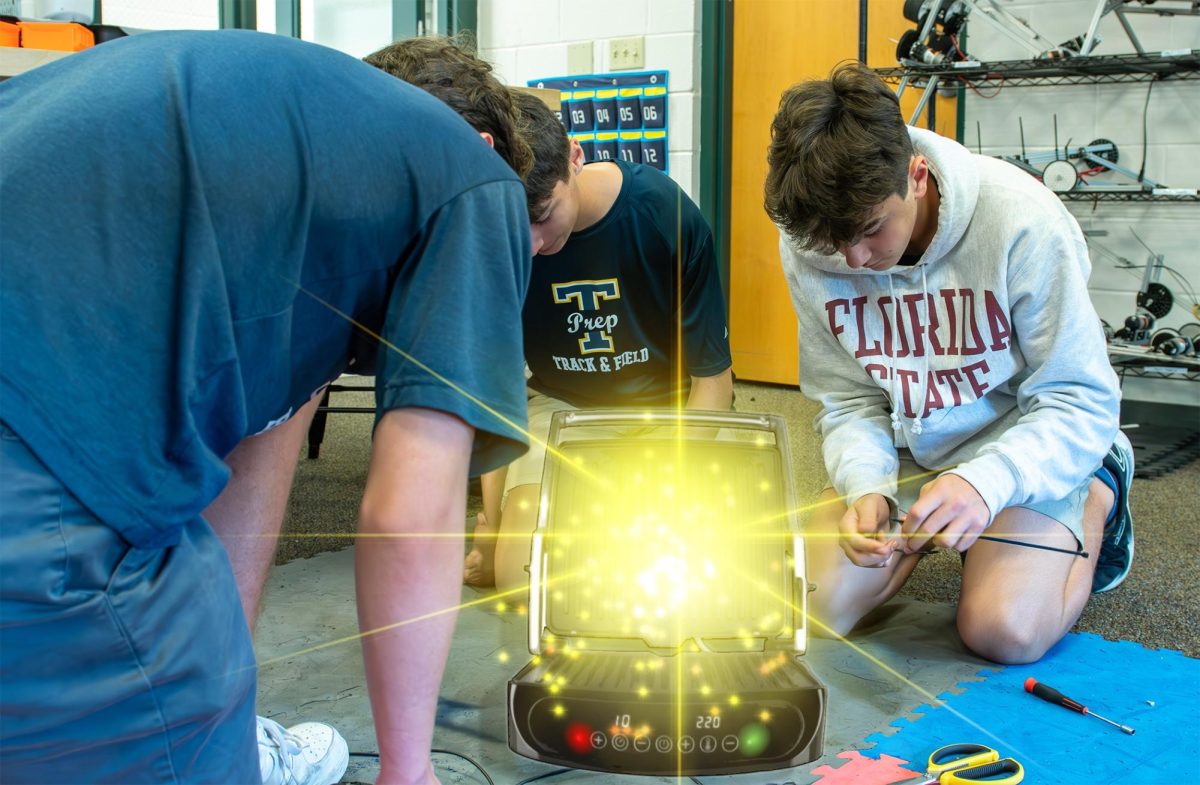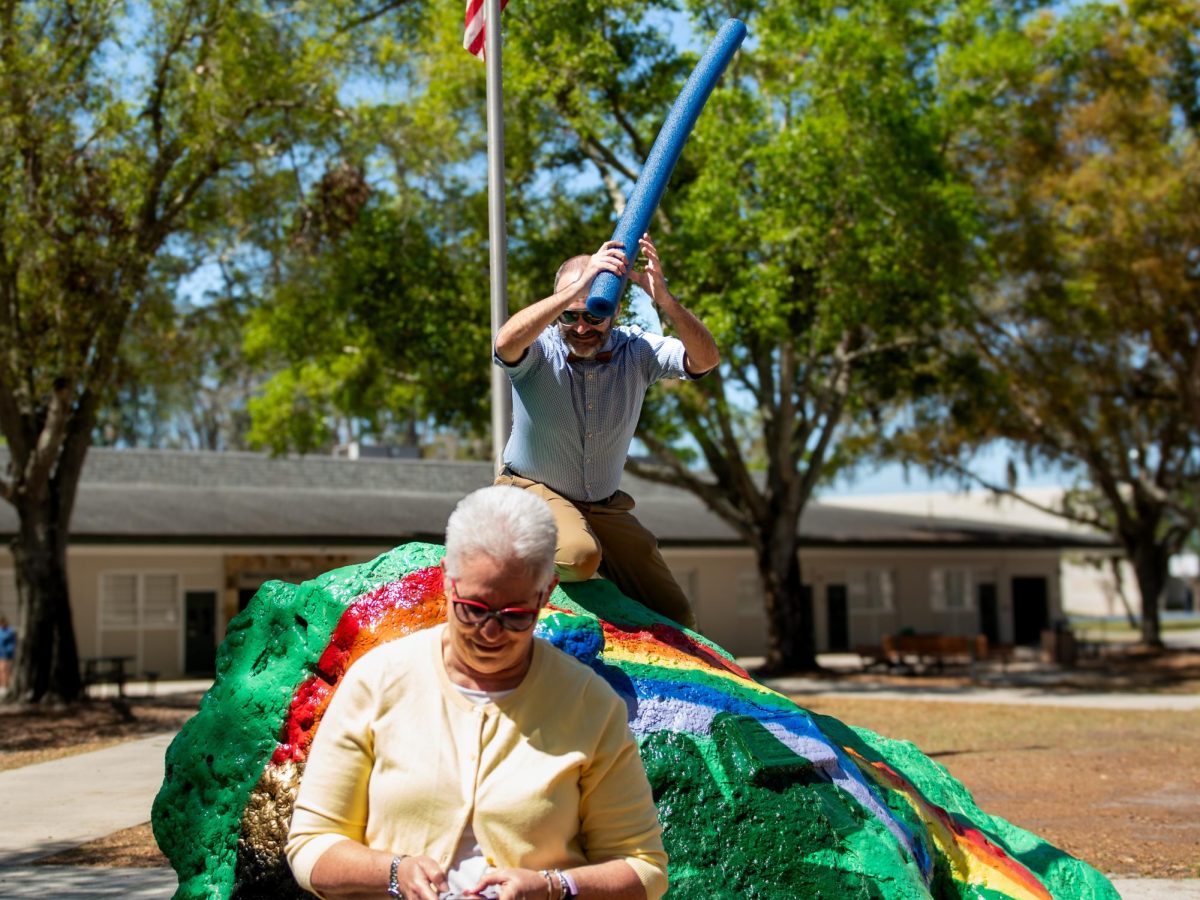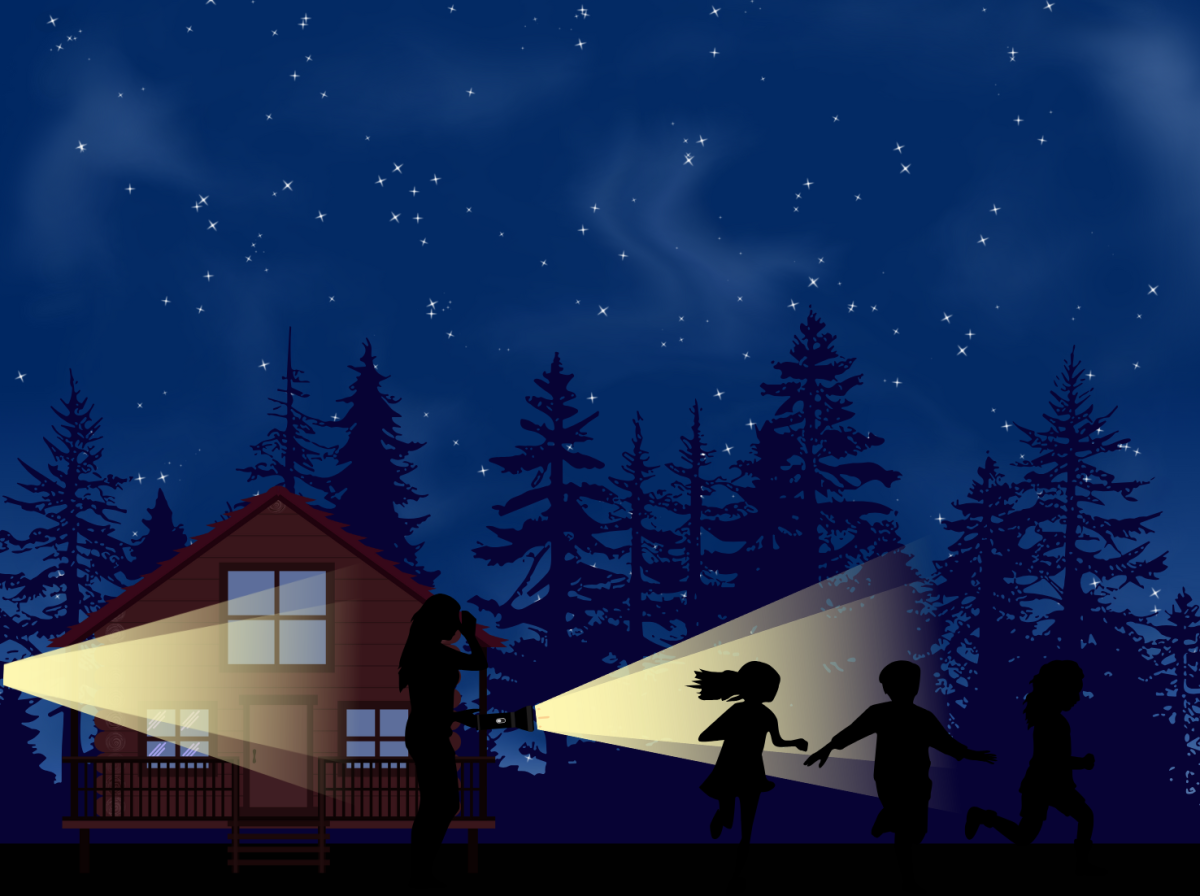Trinity’s newest elective, Science of the Science Center, is taking hands-on learning to an unprecedented level — by having students quite literally build the new Nochur Sankar Science Center. Forget worksheets or theoretical discussions about architecture; this class throws students into the world of structural engineering with nothing but ambition, a few blueprints and ideally, a functioning hard hat.
The curriculum covers everything from physics and construction to fundraising and crisis management because someone has to figure out whether that’s an engineering flaw or just a feature of modern design. Students are expected to draft building plans, secure materials and — most importantly — ensure the Science Center does not collapse before the ribbon-cutting ceremony.
“I thought we’d be making models or something,” senior Kevin Wang said, “Nope. Day one, they handed me a hammer and said, ‘Good Luck.’”
Wang, who chose this course because he was tired of lecture-based learning, has quickly realized how interactive it is.
“I’m tired of freaking packets, yo. Students don’t learn like that. I want to learn face-to-face,” Wang said. “And well, I got my wish.”
Unlike traditional science courses, Science of the Science Center wastes no time on hypothetical scenarios. If students want to learn about load-bearing beams, they will do so while holding one up. Newton learned gravity when an apple fell on his head. Students learned the same principle when a steel beam fell on theirs.
“We’re learning a lot,” freshman Vaishnavi Surapaneni said. “Like how physics applies to real-world structures and how to run when support beams start falling.”
Despite minor setbacks — such as a temporary shortage of screws, a miscalculated support beam and a slight misunderstanding of what constitutes “legally sound” architecture — progress is being made. One wall has been successfully installed, and only three students have had to file incident reports.
Since constructing a science center does not come cheap, students are also responsible for raising money for materials. Fundraisers have ranged from bake sales (which covered exactly one bag of concrete mix) to aggressively pitching sponsorships to any local business willing to donate for naming rights to a classroom door.
“It turns out bricks are really expensive,” Wang said. “So we’re trying to see if we can get an influencer partnership — maybe a ‘Science Center Sponsored by Reddit’ kind of thing.”
The financial struggle has led some students to reconsider their career paths.
“I was thinking of going into engineering,” said Surapaneni. “But now? I think I’ll just go into real estate and sell buildings other people had to build.”
School administrators have expressed unwavering support for the elective, citing its invaluable real-world applications.
“This is a fantastic learning opportunity,” said head of the science department, Dr. Romina Jannotti. “What better way to understand engineering than to actively construct a facility with no prior experience? Between Google and ChatGPT they can webquest their way to the right building code.”
When asked about safety measures, the administration assured that all precautions were strongly encouraged. Hard hats were suggested, structural stability was ideal and first aid kits were definitely somewhere on campus.
Meanwhile, Habitat for Humanity volunteers, who had initially agreed to help, have reportedly distanced themselves from the project.
“We just didn’t have enough volunteers,” said Habitats for Humanity club president Sivi Ward. “So instead of helping build a house, we handed the tools over to some enthusiastic science students and hoped for the best.”
As construction sort of progresses, students remain hopeful that their work will stand the test of time — or at least last through final exams.
“I just want to see it finished,” Wang said. “Preferably before something collapses while we’re inside it.”
The Nochur Sankar Science Center is expected to be mostly functional by the beginning of next year. Whether or not it will still be standing for years to come will be a problem for future students.







![[Satire] Six Steps to Sainthood](https://thetrinityvoice.com/wp-content/uploads/2025/04/DSC_4124-2-NR-1200x907.jpg)




